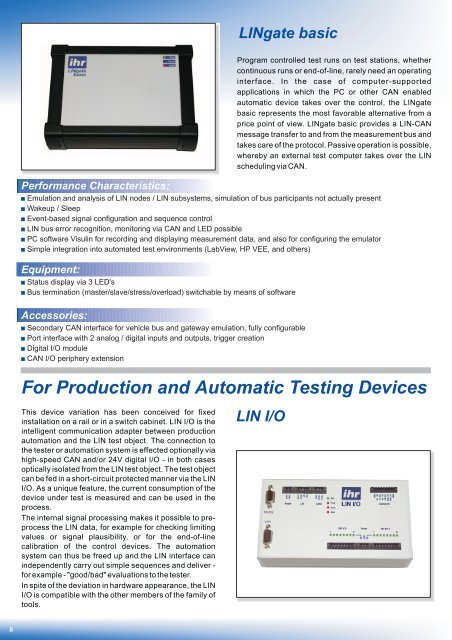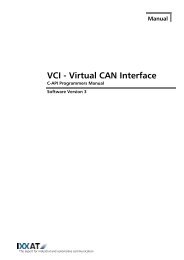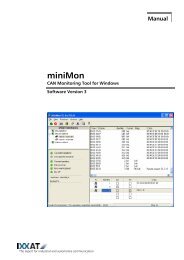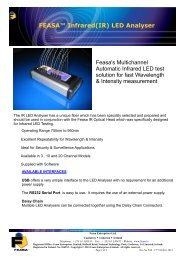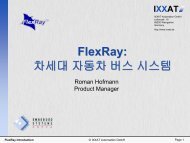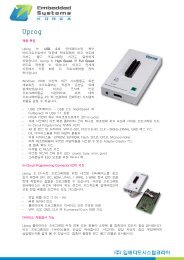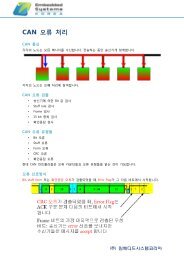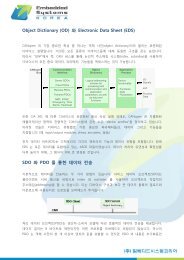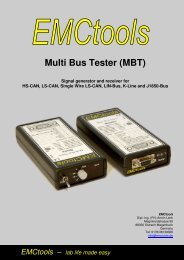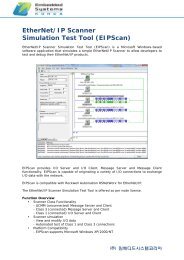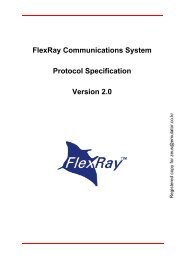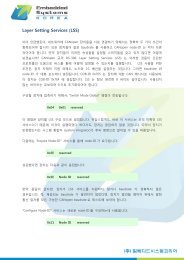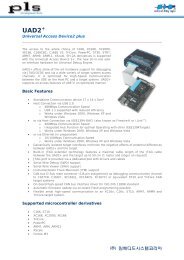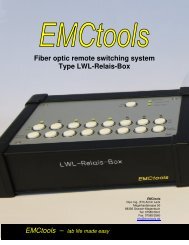LIN Tools
LIN Tools
LIN Tools
Create successful ePaper yourself
Turn your PDF publications into a flip-book with our unique Google optimized e-Paper software.
8<br />
Performance Characteristics:<br />
Equipment:<br />
Accessories:<br />
<strong>LIN</strong>gate basic<br />
Program controlled test runs on test stations, whether<br />
continuous runs or end-of-line, rarely need an operating<br />
interface. In the case of computer-supported<br />
applications in which the PC or other CAN enabled<br />
automatic device takes over the control, the <strong>LIN</strong>gate<br />
basic represents the most favorable alternative from a<br />
price point of view. <strong>LIN</strong>gate basic provides a <strong>LIN</strong>-CAN<br />
message transfer to and from the measurement bus and<br />
takes care of the protocol. Passive operation is possible,<br />
whereby an external test computer takes over the <strong>LIN</strong><br />
scheduling via CAN.<br />
Emulation and analysis of <strong>LIN</strong> nodes / <strong>LIN</strong> subsystems, simulation of bus participants not actually present<br />
Wakeup / Sleep<br />
Event-based signal configuration and sequence control<br />
<strong>LIN</strong> bus error recognition, monitoring via CAN and LED possible<br />
PC software Visulin for recording and displaying measurement data, and also for configuring the emulator<br />
Simple integration into automated test environments (LabView, HP VEE, and others)<br />
Status display via 3 LED's<br />
Bus termination (master/slave/stress/overload) switchable by means of software<br />
Secondary CAN interface for vehicle bus and gateway emulation, fully configurable<br />
Port interface with 2 analog / digital inputs and outputs, trigger creation<br />
Digital I/O module<br />
CAN I/O periphery extension<br />
For Production and Automatic Testing Devices<br />
This device variation has been conceived for fixed<br />
installation on a rail or in a switch cabinet. <strong>LIN</strong> I/O is the<br />
intelligent communication adapter between production<br />
automation and the <strong>LIN</strong> test object. The connection to<br />
the tester or automation system is effected optionally via<br />
high-speed CAN and/or 24V digital I/O - in both cases<br />
optically isolated from the <strong>LIN</strong> test object. The test object<br />
can be fed in a short-circuit protected manner via the <strong>LIN</strong><br />
I/O. As a unique feature, the current consumption of the<br />
device under test is measured and can be used in the<br />
process.<br />
The internal signal processing makes it possible to preprocess<br />
the <strong>LIN</strong> data, for example for checking limiting<br />
values or signal plausibility, or for the end-of-line<br />
calibration of the control devices. The automation<br />
system can thus be freed up and the <strong>LIN</strong> interface can<br />
independently carry out simple sequences and deliver -<br />
for example - "good/bad" evaluations to the tester.<br />
In spite of the deviation in hardware appearance, the <strong>LIN</strong><br />
I/O is compatible with the other members of the family of<br />
tools.<br />
<strong>LIN</strong> I/O


